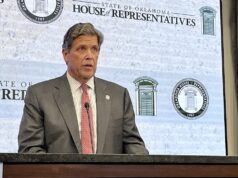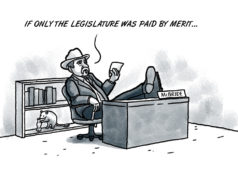
(Letters to the Editors policy: NonDoc believes in creating a responsible forum for the rational and respectful discussion of topics and ideas. As such, we run Letters to the Editors of 300 words and reserve the right to edit lightly for style and grammar. To submit a letter for publication, please write to letters@nondoc.com. We simply require your name, the town in which you live and your contact information.)
To the editors,
NewsOK recently published a dissent piece by the Oklahoma Council of Public Affairs (OCPA) laying out an argument for why the Oklahoma Health Care Authority’s (OHCA) “rebalancing” proposal is wrong for Oklahoma. If you’ve seen the prepared materials OHCA has distributed to support the plan, then you might agree with at least one assertion in the OCPA piece: Overall, the plan is vague.
I might go so far as to use the word “condescending.” To the citizens of Oklahoma who are genuinely interested in better information, the OHCA handout entitled Medicaid Rebalancing Act of 2020, on some level, smacks of a crayon chart to explain an oil painting problem.
The OHCA has a public-communications problem that appears, at least to me, as if they want to avoid communicating. Synergistic and problem-solving communities across the nation are finding that more communication — and crowd-sourcing concerned citizens’ efforts — can provide big payoffs.
Over-simplified soundbites are not useful to help solve our current Medicaid problems. The OCPA’s piece provided an especially problematic and emotionally inciting section when it quoted a “slice of time” fiscal stat:
Yet Medicaid has already grown exponentially through the years. Twenty years ago, our state paid $315 million for Medicaid. In 2015, state taxpayers paid $2 billion to fund a program that now serves more than one out of every four Oklahomans.
Their data fails to mention that those one out of four Oklahomans are mostly children, pregnant women and the elderly and disabled, not able-bodied adults. This expansion would mean affordable healthcare for those working adults.
The problem with statements like this is that while they may be true, they are incorrectly utilized and wielded as facts to support a view without essential context. Here are a few examples of what I mean by “essential context”:
So, in 1995 $315 million, using an economics conversion calculator confirmed by our government, is now the same as $490 million. Further, our state population since that time has grown about 800K persons. Additionally, the U.S. population of aging individuals from 1990 to 2015 has shifted UP by SEVENTY-FIVE million…or approximately a 23% demographic shift. AND, between 2000 and 2010, CHILDREN have begun to lead the demographic statistic in counties across Oklahoma. AND, healthcare costs have increased by 150% between 2000 and 2012.
This excerpt was extracted from an e-mail I wrote to long-time colleagues in the policy and behavioral-health worlds who were having discussions about my topic at hand. My point of that paragraph was this:
The whole problem with “the problem,” and this has nothing to do with oil or rebalancing or the Medicaid expansion debate…is that the historically lowest demographic of wage earners is supporting the highest demographic of vulnerable populations. In 20-25 years, all the aging Baby Boomers will have almost disappeared, and Oklahoma can scratch its proverbial head wondering why there is a Medicaid surplus in the budget…
The previous paragraph is an important piece of context that seems, in my view, to be missing in our Medicaid discussions. This whole demographic issue reminds me of five to 10 years ago when we had two emerging adult children, four cars, college tuition(s), high insurance bills, etc. Now, they’re 24 and 29, and we’re almost able to financially “breathe” again.
Pointing fingers, crayon diagrams, and static scare-quotes don’t help. Realizing that a multitude of variables are explaining our world of hurt MIGHT help.
So, let’s talk about them, too.
Kelly M Roberts, PhD, LMFT
Assistant Professor, Dept. of Educational Psychology at the
University of North Texas
(Editor’s Note: Kelly Roberts blogs about Oklahoma through her Every Point On The Map series at RedDirtChronicles.com and is a semi-regular contributor to NonDoc.)






















